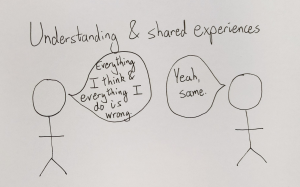Identifying public sector innovation networks

Asking people to do things or think differently is not always welcome. In the public sector, new things are often (or can seem to be) in competition with existing work or priorities. This is one reason why we at OPSI strongly support public sector innovation networks (and communities or practice / forums / etc.). They can be valuable means to connect with like-minded others who you can learn from, share with and sometimes just vent to about frustrations or challenges. In this blog post I’d like to reflect a little on why we see these forums as being important and seek your help in identifying and cataloguing the different relevant networks, formal and informal, that exist when it comes to public sector innovation.
The power of public sector networks
Public sector jurisdictions around the world have many networks and communities of practice to help employees to share lessons, better understand how to navigate and be effective within government, and to connect like-minded or like-function people from across teams, organisations or sectors. In my own career I’ve been part of or involved with a horizon scanning network, a policy visualisation network, a strategic policy network, a leadership network, a procurement forum, a change management network, a design thinking network, a govcamp/GovHack network, a public sector innovation network, and many more besides. Some of these have been formal structures, others have been informal and more social, some have been run as part of people’s jobs, some have been on-the-side things or outside of their work responsibilities, and some have been paid or facilitated by external commercial or not-for-profit catalysts and providers.
Whatever their form, the value of networks is that they can connect shared interests, make it easier to learn from others who are doing similar work or who are facing similar challenges, and help explore and map out an emergent field of activity that is not yet ‘mapped’ to official responsibilities, job descriptions and organisational mandates. Obviously, they can come in many different shapes and sizes, with very different purposes and operate in different ways, but I think there are some things that they have that are particularly useful or needed for innovation.
Public sector innovation networks
Innovation involves novelty, learning, uncertainty and emergent concepts, thinking and practices. To successfully undertake and introduce innovative projects and processes often requires patience, determination and resilience. So it is an area where it can be especially important to be able to connect with and learn from others. Unlike many other networks, public sector innovation networks often help people learn from each other by drawing on divergent experiences but with a shared basis of gaining insight into the process of introducing something novel that has an impact.
Inspiration and sharing ideas
Networks can help provide the comfort and confidence to share your ideas. It can be intimidating to raise a new idea or to question how things are done, because you’re exposing yourself, making yourself vulnerable to criticism or the fear that as a professional public servant you should have already known the answer or why something might not work.

An innovation dedicated (or adjacent) network can provide a venue to gain inspiration, to share ideas without fear of them being ridiculed, or simply to challenge your own thinking about what might or should be possible. It can provide a space to test your ideas, to build them up rather than tear them down, and to connect and play with combinations of different ideas and strategies. From my own experience, these networks are a great space for conversations about learning about something others have done, immediately followed by discussions of “What did introducing X involve?”
Encouragement and validation
Another area where networks can help innovators is by simply being a source of encouragement and validation. In the day-to-day operations of your work it can take courage to propose something different and to have faith that what you are proposing is important and worthwhile. It is very easy within the context of business-as-usual work for colleagues, even well-intentioned and open-minded ones, to not welcome a new way of doing things that is asking them to work and think differently. The pressures of delivering what has already been agreed will often take precedence.

A community of people also interested in questioning how things are currently done can act as a forum for discussing and welcoming different perspectives about what should be done, and where assessments about what is missing (or what might need to stop) can be validated (or not). Sometimes it can be extremely important just to hear from someone else “That’s a great way of thinking about it”, “Yes, we have a similar problem in our department”, or even just “I really like what you’re trying to do”.
Advice and support
Another valuable element where innovation networks can have outsized impact is by acting as forums for emergent thinking and practices or simply sharing simple ‘hacks’ for how to navigate or get around bureaucratic hurdles. As anyone who has ever tried to navigate IT security or tried to get approval to spend less than they might spend on their own dinner for access to a particular web-service knows, sometimes it can just be hard to even start exploring a new idea. Yet precisely because it might be small and seemingly minor, no one tends to have time or interest for trying to navigate the process or overcome the obstacles, often just pointing at unwieldy or cumbersome and unclear processes and saying “Here, you just need to complete these 23 steps”. This is an entirely natural behaviour (it’s only a small thing and we have an existing process after all), but to a potential innovator it can be extremely dispiriting and can act the same as saying “Go away … please”.

An innovation network is a great space for being able to ask “Has anyone else ever tried to ..?”, “How did you get support to do ..?” or “How did you overcome the guidance on requirement Z.xy?” A lot of innovation success in the public sector comes down to being able to point to similar, if not exact, examples and arguing that there is some form of precedence. Decision makers, again quite naturally, often prefer to hear that someone else has done something before, as being the very first in the public sector comes with a high risk premium of gaining media or political attention. Being able to say, even loosely, that it was similar to or learnt from something done somewhere else is much less alarming. Innovation networks can help dramatically with the flow of such knowledge between teams and organisations.
Understanding and shared experiences
Each of the previous elements are important, but perhaps the most valuable or consequential thing that I have seen networks do is reinvigorate people who are drained with trying to drive change in a system that does not want to be changed and remind them that they are not alone. One of the most daunting elements of trying to drive change and innovation is that it requires constant ‘pushing’ of some form from the proponent(s). This might be a leader having to repeatedly communicate and emphasise the same messages and convince people, structures and processes that yes, you really really mean it. Or it might be bottom-up led efforts where someone may have to navigate processes, repeatedly make a business case for what they are trying to do, and convincing leaders and peers alike that it is worthwhile. It’s very easy for people in such situations to feel somewhat alone or that they are making mistakes that they somehow could have avoided while learning or introducing new things.

An innovation network and related events provides an opportunity to connect with others and be re-energised by the recognition that you are not alone, that others are having similar experiences. I have had people say to me before about an innovation event that it gave them the strength to keep on trying with their own efforts. Simply knowing that others are facing similar issues can be immensely powerful.
Innovation networks and the Declaration on Public Sector Innovation
For reasons such as these, there is even an explicit reference to networks in the OECD Declaration on Public Sector Innovation (“Foster networking and peer learning to help public servants learn and borrow from each other”) and many of the elements listed above are woven into other parts of the Declaration. As someone once said to me “Relationships are the unit of change”: “It is the interconnections between actors in the system that are the most important aspect of any transformational change effort. This is because systems are made up of interconnections. The degree of interconnection will depend on the focus but, from a systems perspective, the unit of change is relational not numerical.” In the public sector it is very tempting to rely on rules and decrees to enforce change, but innovation asks people to change themselves – how they think, how they behave, how they relate to others – and so it will always come down to people. Networks are a great way to overlay a different pattern of relationships across complex arrangements of government agencies and structures, and help the flow of insights and lessons move in different ways. In this way innovation networks can be a great tool to support public sector innovation agendas at either an organisational level, a cross-sectoral or specific community level, or across the public sector as a whole.
What networks are there?
In short, we think innovation networks can be great and a critical part of embedding innovation as a practice and into the culture!
So, we would like to do a bit more of a cataloguing of what networks there are, and then perhaps to codify some of the lessons about what works for different networks at differing stages of maturity, sophistication and effort.
We are seeking your help in identifying any relevant networks. An added network does not have to be run by the public sector, but it should have demonstrated strong public sector involvement/focus. We are seeking both open and closed networks (e.g. those with open membership and those that might be limited only to a particular audience).
You can add details of relevant networks on this page.
We intend to publish a full validated list on our site and have it as a living resource.












